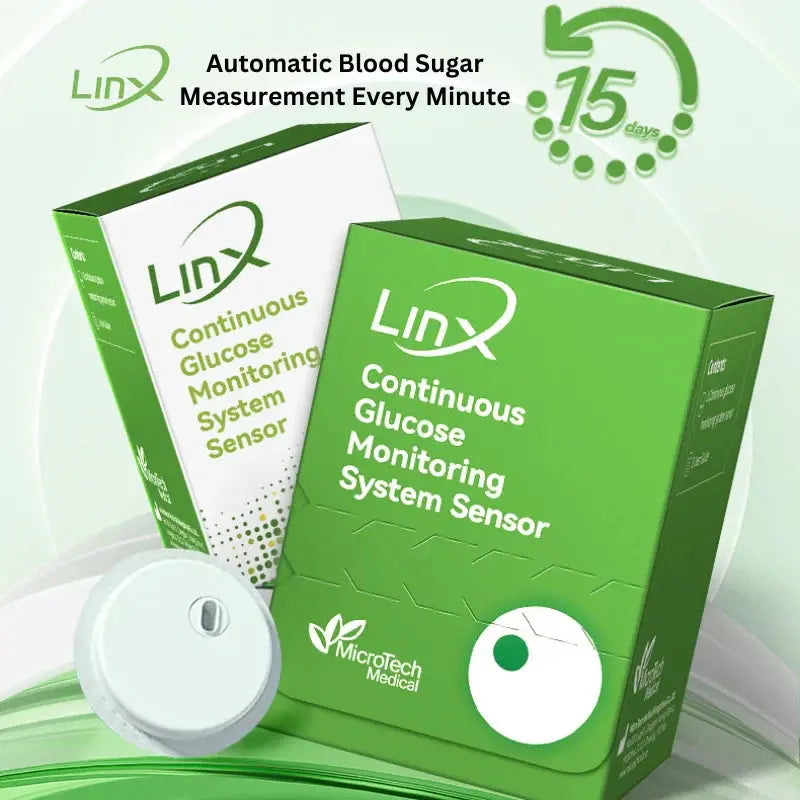
Introduction: Diabetes Is a Chronic, Progressive Disease
Diabetes does not occur overnight. It progresses over years, starting silently with prediabetes and insulin resistance. These stages often go unnoticed until irreversible damage is done. Modern medicine has made great strides in understanding diabetes, but diagnosing its early stages remains a challenge.
The question is this: Are we doing enough to identify risks early? Traditional tools like fasting glucose (FPG) and HbA1c miss crucial indicators, while newer insights—such as OGTT 1-hour glucose levels—have shown immense promise. Yet, waiting for diagnostic guidelines to change may be too late for your health. This is where Continuous Glucose Monitoring (CGM) comes in. It empowers individuals to proactively assess their blood glucose dynamics and take action now, not years later when the standard evolves.
1. Evolution of Diabetes Diagnosis: What Modern Research Teaches Us
Over the decades, diagnostic criteria for diabetes and prediabetes have undergone significant changes:
- The Early Years: Diagnosis relied solely on fasting blood glucose (FPG), which only reflected a snapshot of one moment in time.
- The HbA1c Era: As HbA1c became popular, it offered a longer-term average of blood glucose levels, but this, too, lacked detail and failed to capture daily variability.
- The OGTT (Oral Glucose Tolerance Test): Adding 2-hour postprandial glucose improved our ability to detect glucose intolerance. Yet, newer research suggests this still misses a critical marker—the 1-hour glucose level.
The Power of 1-Hour OGTT
Recent studies have demonstrated that a 1-hour post-OGTT glucose > 155 mg/dL is a far more sensitive predictor of insulin resistance and future diabetes than the 2-hour value.
- A 2018 Diabetes Care study found that individuals with elevated 1-hour glucose, even when 2-hour glucose appeared normal, showed significantly higher risks of diabetes progression.
- Similar findings have been echoed across large cohort studies, highlighting the need for earlier and more accurate diagnostics.
But here lies the issue: changing diagnostic standards takes time—years, even decades. The wheels of medical progress turn slowly, burdened by clinical trials, consensus-building, and institutional inertia. However, you don’t have to wait for the standards to change to protect your health.
2. Why Traditional Blood Glucose Monitoring Falls Short
For individuals concerned about their health, traditional tools like FPG, HbA1c, and sporadic OGTT measurements are simply insufficient.
-
Fasting Glucose (FPG):
-
Reflects only a single point in time.
-
Misses the glucose spikes occurring after meals, which are often the earliest markers of insulin resistance.
-
HbA1c:
-
Provides a “3-month average” of blood glucose but masks dangerous fluctuations.
-
Two individuals with identical HbA1c levels can have vastly different glucose dynamics—one with steady control, the other experiencing extreme highs and lows.
-
The Limitations of OGTT:
-
The OGTT test, though insightful, is inconvenient and often underutilized.
-
Even worse, its 1-hour glucose value—arguably the most predictive—remains largely ignored in routine practice.
Conclusion: While these tools remain useful, they are reactive and incomplete. They fail to capture the nuanced changes in glucose patterns that signify early risk.
3. Continuous Glucose Monitoring: Seeing What Others Miss
What is CGM?
Continuous Glucose Monitoring (CGM) is a wearable technology that measures your glucose levels every few minutes, providing a detailed, real-time view of your blood sugar dynamics 24/7.
Why CGM Is a Game-Changer
-
Captures Post-Meal Glucose Spikes:
CGM identifies dangerous glucose peaks that occur after meals—often the earliest signs of insulin resistance. -
Tracks Glucose Variability:
Research has shown that glucose variability (fluctuations throughout the day) is more harmful to health than stable, mildly elevated glucose. -
Monitors Nighttime Trends:
Early signs of glucose dysregulation often appear at night. CGM ensures these hidden patterns are not missed. -
No Need to Wait for Standards:
By continuously monitoring your glucose, you can “self-diagnose” risks earlier and take preventive measures immediately.
Scientific Support
Studies have validated CGM’s role in detecting early abnormalities:
-
A 2020 study showed that CGM users identified post-meal spikes far earlier than those relying solely on HbA1c or FPG.
-
Another study demonstrated that individuals with elevated glucose variability, captured via CGM, had higher risks of developing metabolic syndrome.
In short, CGM offers a proactive, personalized way to understand your metabolic health and detect risks long before conventional diagnostics would.
4. Life Is Not a Clinical Trial: Why You Must Act Now
Science advances slowly, but your life is not a clinical trial. Waiting for updated guidelines on the 1-hour OGTT or other “official” standards could mean lost years—years during which insulin resistance progresses, and risks accumulate.
With CGM, you have the power to:
-
Understand your unique glucose patterns.
-
Identify post-meal spikes and variability.
-
Implement lifestyle changes early—including improved diet, exercise, and sleep—before glucose dysregulation becomes irreversible.
Every day you wait, you miss an opportunity to protect your health.
5. Conclusion: Take Control with CGM
The evolution of diabetes diagnostics shows us one thing: we are learning more every day about the early warning signs of this chronic disease. Yet, change is slow, and the responsibility for proactive health management lies with individuals.
Continuous Glucose Monitoring (CGM) empowers you to take control of your health, offering unparalleled insights into your glucose dynamics. By detecting risks earlier and guiding smarter lifestyle choices, CGM helps you prevent insulin resistance and prediabetes from progressing.
Your life is too valuable to wait for guidelines to catch up. Act now—because prevention is always better than treatment.
References
-
American Diabetes Association. “Standards of Medical Care in Diabetes – 2023.” Diabetes Care.
-
Fiorentino, T.V., et al. “One-Hour Postload Hyperglycemia: A Marker of Early Glucose Dysregulation.” Diabetes Care, 2018.
-
Monnier, L., et al. “Glucose Variability: A New Paradigm in Diabetes Management.” Diabetes Care.






